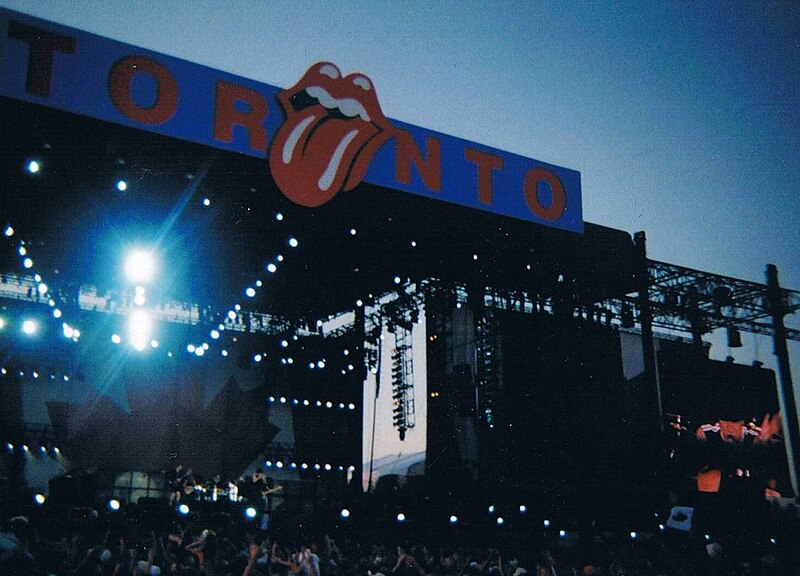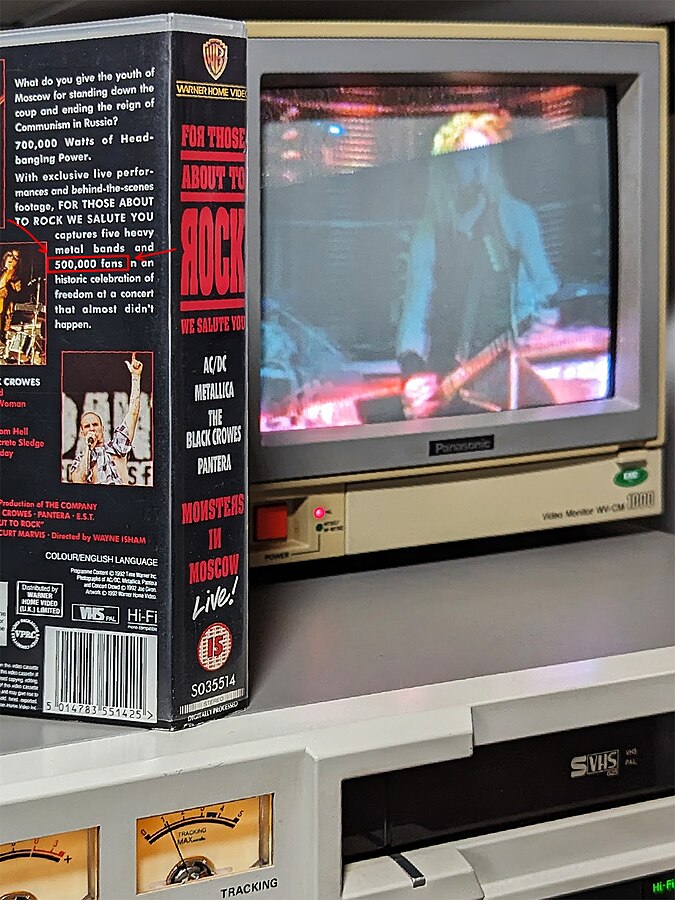Concerts have always been a powerful way to bring people together, but some events go beyond expectations, gathering crowds that are truly mind-blowing. From iconic rock bands to legendary pop stars, these massive performances attract millions of fans from all over the world. Whether it’s a free show on a beach or a grand-scale festival in a park, these concerts set records for attendance and become unforgettable moments in music history. In this list, we’ll dive into the 12 largest concerts ever held, highlighting their scale, significance, and what made them so extraordinary.
Rod Stewart, Copacabana Beach (1994)

On New Year’s Eve 1994, Rod Stewart performed in front of a staggering 3.5 million people during a free concert on Rio de Janeiro’s Copacabana Beach. The outdoor venue stretched across the beach, with fans packed from one end to the other. The event, part of a massive New Year’s Eve celebration, broke records not only for its attendance but also for its scale and energy. Stewart, backed by a huge production, played a mixture of his hits, captivating the crowd with his charisma. The concert was free, attracting thousands of locals and tourists alike. Organizers estimated that over 2 million people lined the beach while millions more watched from a distance. This concert still holds the record for the largest crowd ever for a single performer.
The Rolling Stones, Downsview Park, Toronto (2003)

The Rolling Stones’ “Licks” tour stopped at Downsview Park in Toronto on September 30, 2003, setting a record with 450,000 attendees. This monumental event took place in an open-air venue, with the band performing to an immense sea of fans who had gathered for the occasion. It marked one of the final stops of their worldwide tour, and the sheer scale of the crowd made the event legendary. The Stones delivered a high-energy performance with their iconic hits, making the night unforgettable for those in attendance. This concert was part of a series of massive events the band had performed during their career, but the Toronto show remains one of their most memorable. The venue was massive, and even with 450,000 people, the atmosphere was electrifying. The show was both a testament to their enduring popularity and a moment in music history.
Monsters of Rock, Tushino Airfield (1991)

The Monsters of Rock festival at Tushino Airfield in Moscow in 1991 attracted over 1.6 million attendees, making it one of the largest rock concerts of all time. Headlined by AC/DC, the event marked a historic moment in the Russian music scene following the fall of the Soviet Union. The crowd stretched as far as the eye could see, with people from all over Europe traveling to Moscow to witness the spectacle. The airfield was transformed into a colossal stage, and the sound of roaring guitars filled the space. In addition to AC/DC, bands like Metallica and Pantera graced the stage, each delivering high-intensity performances. The significance of this event went beyond the music—it represented the cultural shift occurring in Russia at the time. The record-breaking attendance solidified its place in rock history.
The Rolling Stones, Rio de Janeiro (2006)

In 2006, the Rolling Stones performed on the Copacabana beach once again, this time for a free concert that drew approximately 1.5 million people. The stage was set against the backdrop of the beach, with the ocean on one side and the iconic cityscape on the other. The event was part of their “A Bigger Bang” tour and attracted an international crowd eager to experience the legendary rock band. The massive crowd, with fans standing shoulder-to-shoulder, roared with excitement as Mick Jagger and company rocked out for nearly two hours. This performance was a testament to the Stones’ global appeal and their ability to gather colossal crowds even after decades in the industry. The free concert created an electrifying atmosphere, turning the beach into a giant festival. It was one of the largest outdoor music events in the world, yet another milestone in the band’s illustrious career.
Jean-Michel Jarre, Moscow (1997)

Jean-Michel Jarre’s 1997 performance in Moscow, known as “Oxygen In Moscow,” brought together an audience of 3.5 million people, setting a Guinness World Record for the largest concert attendance at the time. This performance, a part of the city’s 850th anniversary celebrations, was a mesmerizing blend of electronic music and spectacular visuals. The French composer and electronic music pioneer played amidst an incredible display of lasers, lights, and fireworks, adding to the grand scale of the event. The crowd filled Red Square and the surrounding areas, making it feel like a sea of people under the open sky. The show was a fusion of music, technology, and artistry, reflecting Jarre’s innovative approach to live performances. Moscow’s streets were clogged with fans, many of whom came from other parts of Russia to see the extraordinary spectacle. This record-breaking performance not only set attendance records but also solidified Jean-Michel Jarre’s reputation as a master of creating large-scale, immersive musical experiences.
Celine Dion, Stade de France (1999)

Celine Dion’s “Taking Chances World Tour” stop at Stade de France in Paris on July 5, 1999, attracted 1.3 million fans, setting a new record for a female artist. The open-air venue, a massive stadium built for the 1998 World Cup, provided the perfect backdrop for the Canadian singer’s powerhouse performance. Dion, known for her incredible vocal range, captivated the audience with an emotional set list that spanned her career. The sheer size of the crowd created a palpable energy that seemed to reverberate through the stadium. Her performance, filled with dramatic flair, left the massive audience in awe. This concert not only set a record for attendance but also proved Dion’s global appeal as a pop icon. The 1.3 million attendees were treated to an unforgettable night of music, with fireworks and lasers adding to the magic.
The Rolling Stones, Hyde Park, London (1969)

The Rolling Stones’ free concert in Hyde Park, London, on July 5, 1969, attracted an audience of over 500,000 people, making it one of the largest outdoor concerts of the era. The event was a tribute to the band’s late guitarist Brian Jones, who had passed away just days earlier. The concert featured a blend of new and old material, including songs from their latest album at the time, Let It Bleed. Despite being one of the first major rock events of its kind, the show was remarkably well-organized, with thousands of fans gathered to celebrate Jones’ legacy. The energy in the crowd was intense, as fans from all walks of life joined in the historic moment. The event was a turning point for the Stones, who would go on to perform at even larger venues worldwide. This legendary concert remains one of the most iconic moments in the band’s career.
Paul van Dyk, Love Parade, Berlin (2008)

Paul van Dyk performed at the 2008 Love Parade in Berlin, which drew an estimated 1.5 million people, making it one of the largest electronic dance music events in history. The Love Parade, an annual celebration of electronic music and culture, transformed Berlin’s streets into a massive open-air festival. The crowd, which spanned several kilometers, moved rhythmically to van Dyk’s electrifying beats as the DJ controlled the energy of the masses. The parade, with its vibrant costumes, floats, and DJ trucks, was a celebration of unity and music. As one of the main headliners, van Dyk’s performance was an essential part of the day, and his music resonated through the massive crowd. The sheer scale of the event showed the immense popularity of electronic dance music in Germany and beyond. This Love Parade remains a landmark in the world of electronic music culture.
Garth Brooks, Central Park (1997)

Country music superstar Garth Brooks made history in 1997 with his free concert in New York’s Central Park. With an estimated 1 million people in attendance, the performance became the largest single concert in Central Park’s history. The concert was part of Brooks’ world tour and was unique for its location, as Central Park had never hosted a concert of such magnitude before. Fans of all ages gathered for a once-in-a-lifetime opportunity to see the country legend perform in an open-air setting. Brooks’ energetic performance and passionate fans created an unforgettable atmosphere. The event was free, which contributed to the massive turnout of both locals and tourists. It remains one of the most iconic concerts in the world of country music.
Coco Lee, Tiananmen Square (2001)

Chinese pop star Coco Lee performed in front of an audience of 1 million people during her 2001 concert in Beijing’s Tiananmen Square. This historic event occurred in the heart of China’s political and cultural capital, attracting massive crowds from all over the country. Lee’s performance was a monumental cultural event, showcasing her unique blend of pop and traditional Chinese elements. The concert was part of the celebration for China’s National Day and featured stunning choreography and a dazzling light show. The presence of such a large crowd underscored the enormous popularity of Lee in Asia at the time. Fans from all walks of life gathered to watch the live performance. This event is often remembered as one of the largest musical gatherings in China’s history.
The Rolling Stones, Stade de France (2007)

The Rolling Stones again broke records with their 2007 performance at Stade de France in Paris, drawing a crowd of 500,000. The concert, part of their “A Bigger Bang” world tour, became one of the largest ever in Europe. Fans from across the continent gathered to hear the legendary rockers perform, filling the entire stadium and surrounding areas. The atmosphere was electric, with the band delivering an unforgettable show. The event was considered a milestone for the Stones, who were nearing 50 years in the business. The performance was broadcast worldwide, further solidifying their status as global superstars. This concert remains one of the largest in Paris’ concert history.
Phil Collins, Live Aid (1985)

Phil Collins famously performed at both London’s Wembley Stadium and Philadelphia’s JFK Stadium in the same day during the Live Aid concert of 1985. The combined attendance at both venues was estimated at around 1.5 million people. Collins’ performance in Wembley Stadium was electrifying, and his quick flight to the U.S. ensured he didn’t miss his second set in Philadelphia. Live Aid was a monumental global charity concert, raising funds for famine relief in Ethiopia. The event saw some of the biggest names in music perform, with Collins making a unique contribution to its success. Fans were deeply moved by the spirit of the event, as well as the thrilling performances. The combined impact of the concerts helped raise millions of dollars for charity.
This article originally appeared on Rarest.org.
More From Rarest.Org
Aquariums are home to some of the most fascinating creatures in the world, showcasing the incredible diversity and resilience of aquatic life. Among these inhabitants, some species have defied the odds, living far beyond the expected lifespans of their species. Read more.
Lighthouses have been a beacon of safety and guidance for sailors navigating treacherous waters for centuries. Many of the oldest ones in the United States stand as historic landmarks, showcasing the country’s rich maritime heritage. Read more.
Beneath the surface of our oceans and lakes lie the remnants of ancient cities, long lost to the passage of time. These submerged sites hold fascinating stories of thriving civilizations, natural disasters, and the enduring mysteries of human history. Read more.



